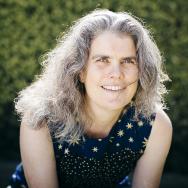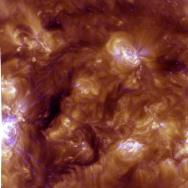For Prof. Andrea Ghez, it was fitting that she delivered her first lecture since winning the Nobel Prize in Physics as part of the University of Chicago’s Maria Goeppert Mayer Lecture Series.
Not only because Ghez attended the University’s Laboratory Schools, where she developed “the deep commitment to asking the right questions rather than learning the facts,” but because the lectures highlight female physicists like Ghez who are shaping and defining their fields. The UChicago Department of Physics established the lectures in 2017 in honor of Goeppert Mayer, a Nobel laureate who developed the nuclear shell model while at UChicago-affiliated Argonne National Laboratory.
Ghez’s Oct. 22 lecture, “The Monster at the Heart of our Galaxy,” focused on her Nobel prize-winning research on the supermassive black hole at the center of the Milky Way. She described how she studies something that’s invisible, the challenges of working on a mountaintop at 14,000 feet—and the questions that still remain about the universe.
The journey started out by convincing a lot of people that her method to observe the center of the galaxy would work at all, she said:
“In hindsight, all of this looks so straightforward, like ‘of course you would do this,’” said Ghez, the Lauren B. Leichtman and Arthur E. Levine Chair of Astrophysics at UCLA. “But in fact, the first telescope proposal I put in was turned down because they didn't think that technology would work. And even if it did, we wouldn’t see stars—and even if we did, they wouldn't move. So it gives me great pleasure to show these pictures.”
The Maria Goeppert Mayer Lecture is sponsored by the Heising-Simons Foundation.

